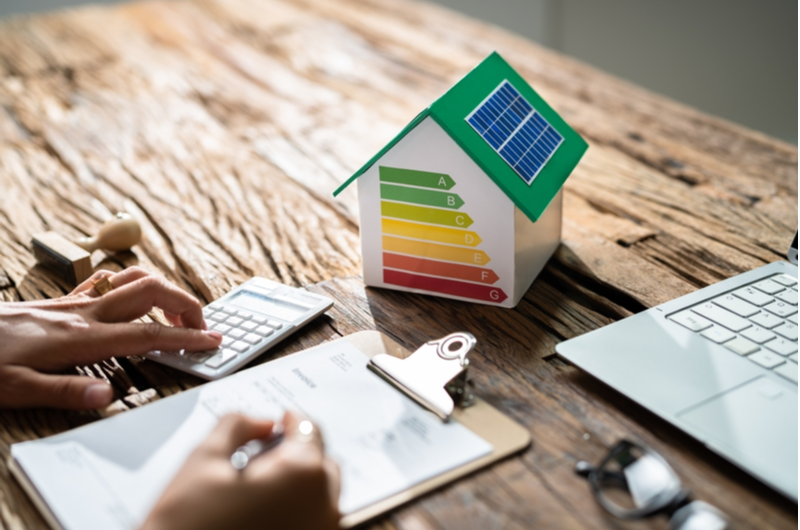Save Money On Your Energy Bill
There are many changes you can make around the house to cut down on your energy bill. Learn more about making your home energy efficient.
Whether you are concerned about your environmental footprint or simply want to lower your utility bills, there are many benefits to making your home more energy efficient. Most individuals are unaware how much energy they use at home. One of the ways to learn more about energy usage is through an energy audit.
There are a few different ways to get an energy audit. In most states, you can request an audit through your power company or utility provider. Some states also have registered agents who can perform energy audits. Finally, there are private businesses that run energy audits, but these typically charge a small fee.
What Is An Energy Audit?
Energy audits consist of a broad spectrum of energy studies and evaluations that can be as simple as a quick walk-through of a facility or home to identify major problem areas, or as complex as a comprehensive analysis of existing and alternate energy efficiency measures that can be implemented to meet health and safety levels, cost effectiveness, and environmental impact. There are several audit procedures which have been developed for non-residential buildings (ASHRAE; IEA-EBC Annex 11; Krarti, 2000).
The key parts of the IEA EBC Annex 11, ASHRAE, and Krarti (2000) consist of the following steps.
- General Analysis: This includes an overview of building data, as well as general utility information. Study and review of currently installed equipment is a normal part of the general analysis. Energy bills are also assessed.
- Real Operation: Survey and analysis of typical, real world operation conditions.
- Building Behavior: Assessment of the building's interaction with general weather conditions, occupants, and typical hours of operation.
- Energy Conservation Options: Selecting and evaluating energy efficiency boosting or energy saving methods and technology, as well as additional conservation methods.
- Energy and Cost Estimates: Evaluation of potential energy and cost savings from recommended procedures and conservation techniques.
- Customer Needs/Concerns: Most audits follow up with customer needs and concerns, such as methods to achieve stated goals with lower overhead costs.
There are four typical levels of energy audit available, each with varying degree of scrutiny and detail. These levels can be generally outlined (as by the ASHRAE) as follows:
- Level 0 – Benchmarking
- Level I – Walk-through audits
- Level II – Detailed/General energy audit
- Level III – Investment-Grade audit
Determining Average Costs
Part of the reason many homeowners do not realize their homes are using too much energy is they do not know how much energy bills typically cost. Your energy bills greatly vary depending on the time of year and where you live. For example, in warmer states like Florida or California, you will experience higher bills during the peak of summer if you use an air conditioner. In colder states, spikes are common at the end of the year because of increased heating costs. Your type of home also has an impact on energy bills. Larger homes require more energy to fully heat or cool. Most power companies and utility providers have average energy costs available online, so you can compare your bills against their numbers.
Reducing Heating and Cooling Costs
In most cases, high energy bills are a result of inadequate heating and cooling. If you are looking to reduce your bill, these are excellent places to start. Even without an official energy audit, there are a few red flags to look for. First, start by checking the seals on all your windows and doors. If you feel any air getting through the cracks, consider sealing it with caulk or installing weatherstripping.
Leaky ductwork is also an issue. Check your ventilation and air conditioning ducts for any leaks. In some cases, this may be the result of a faulty system and require a professional or HVAC specialist to fix. Ductwork repairs vary depending on location, but typically cost between $200 to $800. Repairing a damaged vent is much less expensive, rarely costing more than $100. Fixing these issues early can also prevent other, more expensive issues later.
An easy way to reduce your heating is changing your thermostat. If you have an older model, consider replacing it with a smart thermostat. With a smart thermostat, you can use an app to adjust the temperature. It also lets you set different temperatures based on the time of day. For example, during the day when you are at work or school, you can turn the thermostat down, then have it return to normal temperatures when you are on the way home. Many homes end up reducing their energy bills by 10 to 15 percent from thermostat changes alone.
You can also check your refrigerator and freezer. Some appliances use more energy than necessary cooling your food. You can safely lower the temperature of your refrigerator to 38 degrees and your freezer to five degrees without putting your food at risk.
Replacing your doors and windows is a good way to cut down on heating and cooling costs, but it can also be expensive. If you are struggling with the costs, consider applying for help through the Weatherization Assistance Program. This is a federally funded program that offers financial help to making any changes to your home that improve energy efficiency.
Reducing Water Costs
Another source of high energy bills is hot water usage. It may seem small at first, but shaving a few minutes off of your shower time can drastically reduce how much water you use. Even reducing your shower by two minutes can save on average five gallons. If you do not want to cut into your shower time, consider replacing your shower head. The Environmental Protection Agency (EPA) has a list of recommended shower heads, such as WaterSense brands, that meet all the energy efficiency qualifications. These products may initially seem more expensive, but you quickly earn your money back in reduced water bills.
When you are washing clothes, either use cold or warm water instead of hot water. This cuts down your energy usage per load by at least half, sometimes more depending on the age of your washing machine. You also want to look out for leaky faucets. Much like your other appliances, you can also change the temperature on your water heater. On average, water temperatures are set to 140 degrees, but 120 degrees is more efficient and has a minimal impact on your water heat. If you are leaving town, you can even set your temperature to a lower setting to further reduce energy costs.
A common misconception is dishwashers increase your energy bill. Dishwashers may use more electricity, but you ultimately use more energy through water consumption if you hand wash your dishes. If you are still concerned about your dishwasher, consider replacing it with a newer, energy star model.
Reducing Power and Lighting Costs
Another easy change to reduce your energy bill is replacing your lightbulbs. If you use older bulbs, consider changing to either compact fluorescent or LED bulbs. These bulbs not only provide better lighting, but use significantly less energy. Over the course of the year, your energy bill may drop by almost $100 solely from bulb changes. Installing dimmer switches gives you even greater control over your lighting.
There are fewer options for reducing power costs, but still some changes to make. More houses are using electricity because of computers, phones and gaming consoles. You can install a smart power strip to stop these devices from getting power after they are fully charged. With a traditional power strip, these devices continue to take up power, even if they are fully charged or in standby mode.



